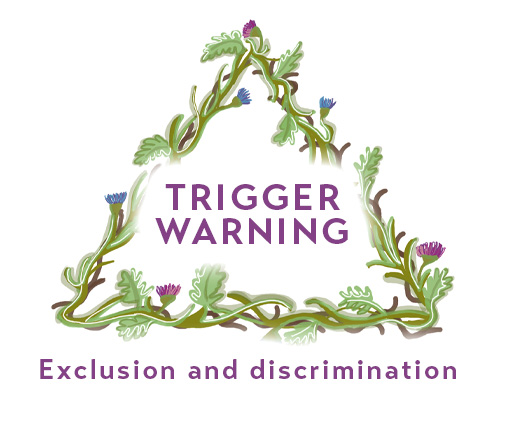1.1 Ethnicity and race
Ethnicity and race underpin specific types of belonging that are often associated with significant differences in learners’ experiences of mental wellbeing. For example, Lazaridou and Fernando (2022) have shown how institutional racism, and ingrained ‘white’ perspectives in society, can increase the mental health burden on learners.
Ethnicity and race differ from cultural identity in that cultural identity is associated with particular practices, concepts and worldviews. Whereas ethnicity and race are based on being categorised on the basis of characteristics that you have no control over, such as your skin colour or family/place of birth.
People may be categorised and unfairly treated in a particular way purely because of those characteristics, even though they have no control over them, as demonstrated in some of the examples of stigma and racism against Black learners, given in last week’s materials. Another example is how those with learning differences, such as dyslexia, used to be inappropriately classified as ‘educationally sub-normal’ (ESN), as highlighted in the historical section of Week 3. Such categorisation is no longer acceptable.
Nowadays, it is generally recognised that categorising individuals on the basis of attributes such as race or ethnicity is based on ideas created and accepted by societies for a specific purpose which need to be critically examined. For example, the Law Society UK (2022) has described how race categorisation is seen as ‘rooted in white supremacy and efforts to prove biological superiority and maintain dominance over others’. This type of categorisation, the assumptions behind it and the negative impacts for many, is therefore rightly being challenged. However, despite negative experiences of racism, racial identity can also remain an important and positive part of an individual’s cultural identity and wellbeing.
In an educational context, learners may experience any or all of the following:
- stereotyping: for example assuming they have shared attributes based solely on race or ethnicity
- prejudice: beliefs based on stereotyping, such as negative attitudes towards Black or Asian learners
- discrimination: that is action(s) based on prejudiced beliefs, such as an educator wrongly assuming that a learner is more, or less, likely to succeed based simply on their race.
Such stereotyping, prejudice and discrimination do not only apply to race or ethnicity; they may also be inappropriately based on other attributes such as class, or regional accents, and may also be targeted at learners based on their sexuality, gender identification or those with disabilities. In the UK, the Equality Act (2010) legislates to prevent discrimination of individuals because of their characteristics which include sex, gender, ethnicity and disability. As an educator it is important to not only recognise but also to challenge such stereotyping, prejudice and discrimination in order to provide a safe, supportive and inclusive learning environment for diverse learners. This is also addressed elsewhere in this course including in the creation of safe spaces (Week 1), in the challenging of stigmatising beliefs (Week 5) and throughout Week 3.
This activity may be triggering, potentially reminding you of experiences you have had of being stereotyped or discriminated against. Such experiences can be painful to recall, so if you would rather avoid such content you can skip this activity and go to the next section or go directly to Section 3 which focuses on support.
Activity 2 Ethnicity and race in an educational setting
Can you think of, or do you have personal experience of, ethnic or racial stereotyping, prejudice or discrimination within your educational setting? Have you also identified these in educational materials (you may want to refer back to Week 5, Section 3 for more on this)?
Can you think of ways in which this might impact on a learner’s mental health?
How could such stereotyping, prejudice and discrimination be prevented? What policies and procedures does you institution have in place to support this? How effective are they?
Discussion
Learners’ experiences of stereotyping, prejudice and discrimination on the basis of race, ethnicity or culture not only affect their sense of wellbeing but have also been shown to affect progression and achievement in their studies in terms of ethnic and degree awarding gaps. For example, Black learners have higher drop-out rates and are less likely to attain first or upper-class degrees than white learners or those from other minority ethnic groups (House of Commons, 2023) despite feeling more pressure to succeed (Stoll et al., 2022). Black and Asian learners have also been found to have the lowest levels of mental health disclosure, which means they are least likely to be provided with appropriate support for their learning (Robertson, Mulcahy and Baars, 2022). Stereotyping, prejudice and discrimination can all have a negative impact and should not be ignored.



